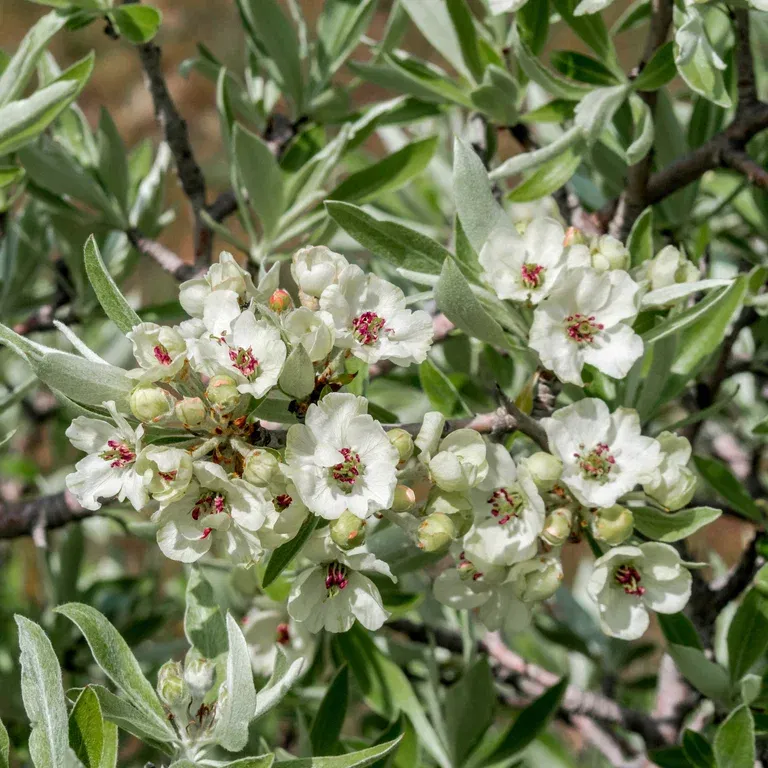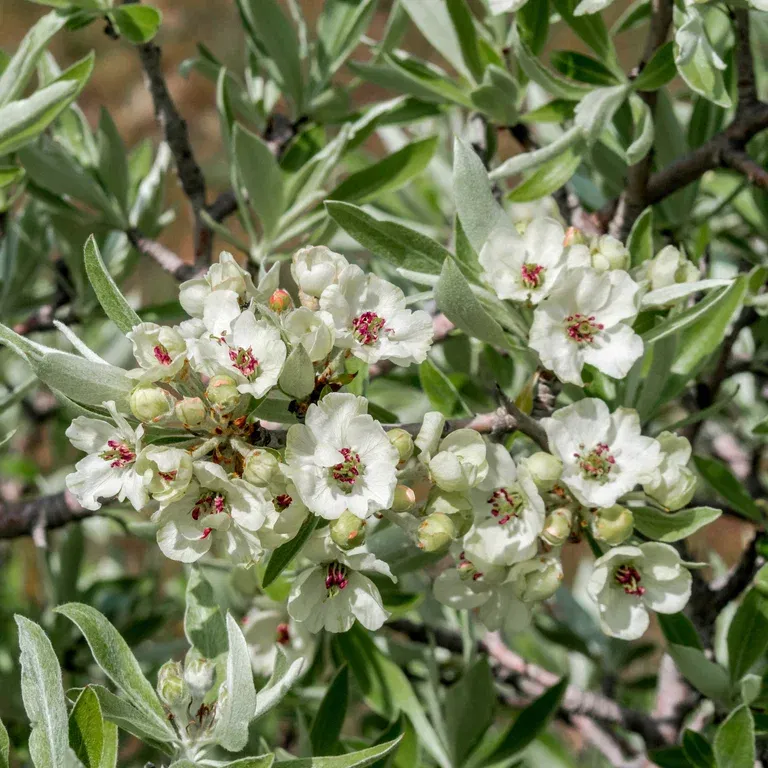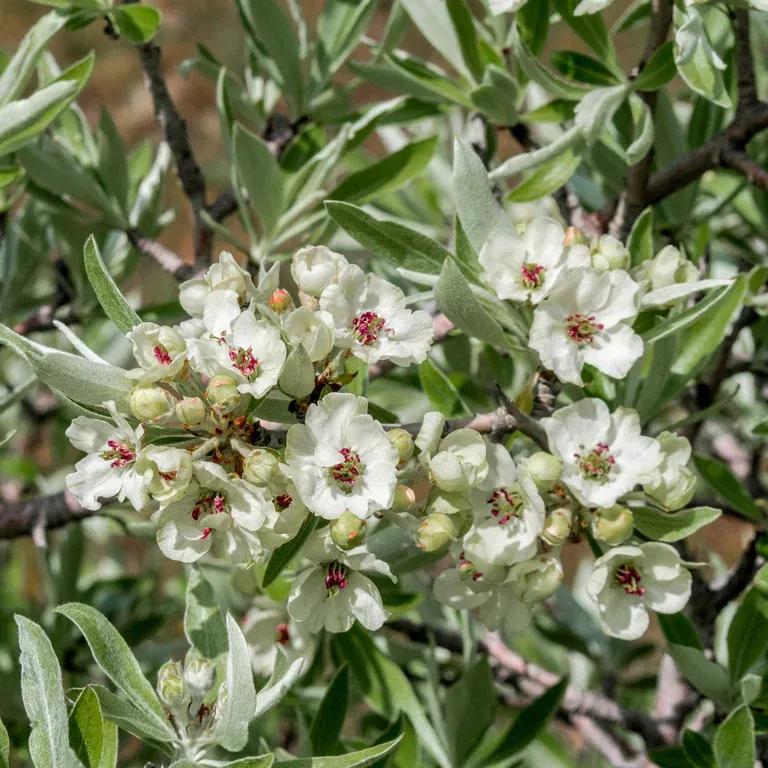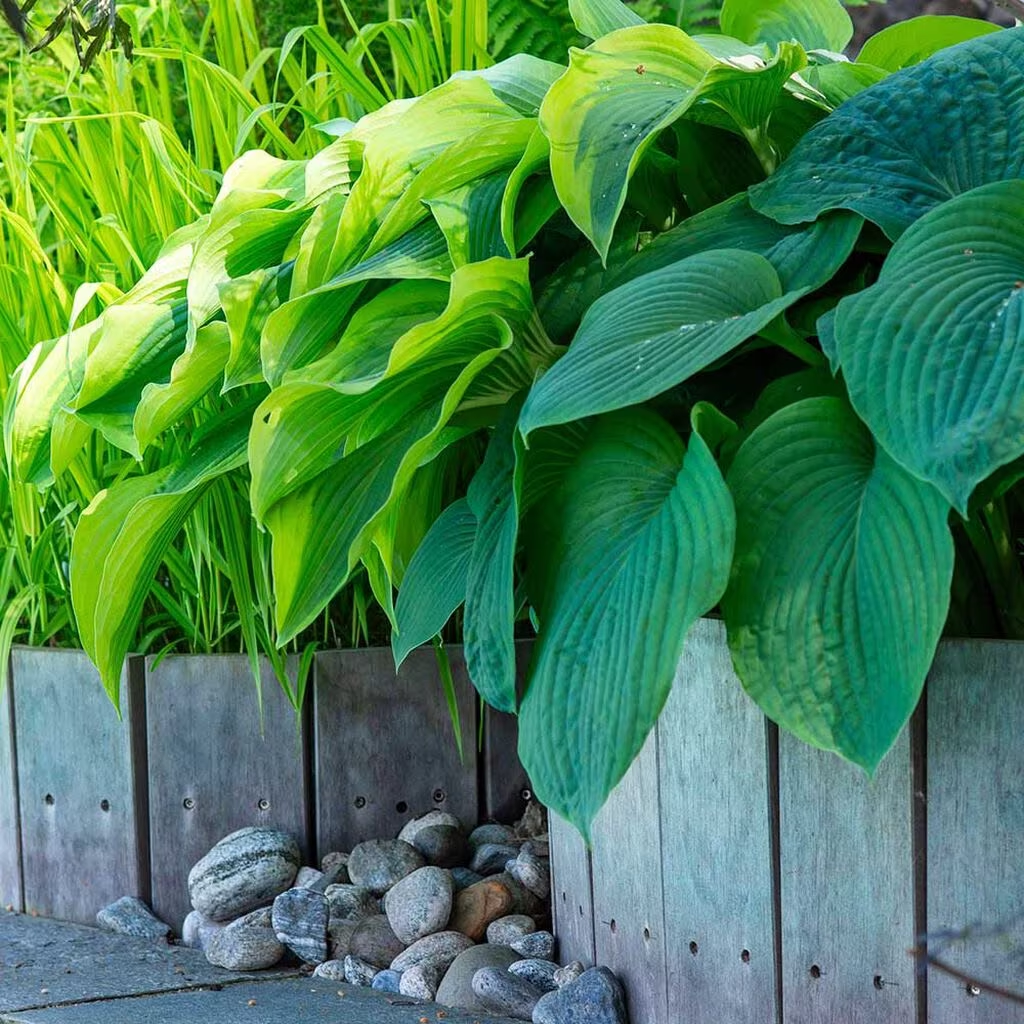Willow-leaved pear - planting and care
Willow-leaved pear (Pyrus salicifolia) is an elegant ornamental tree with shiny silver-colored leaves and beautiful flowers. The tree is often called the olive tree of the North and brings a delightful Mediterranean atmosphere to the garden.

Scientific name (Latin): Pyrus salicifolia
Family: Rose family (Rosaceae)
Other names: Silver pear, Silver pear tree
With its shiny silver-colored, slightly furry leaves and beautiful flowers, the willow-leaved pear is a charming addition to the garden or patio. This ornamental tree resembles an olive tree and is therefore called the olive tree of the North. For those who want a Mediterranean atmosphere in the garden, the willow-leaved pear can be a suitable alternative – it is considerably more hardy than an olive tree.
The tree grows relatively slowly. It is grafted from wild pear trees, and depending on whether it is top- or bottom-grafted, it can either grow very tall or maintain a relatively low height.
How to care for the willow-leaved pear
- Watering
The willow-leaved pear tree tolerates drought well, but give it some water if it stays dry for a long time.
- Pruning and shaping
Pruning is beneficial for shaping the tree and promoting healthy growth. Remove dead or damaged branches to make room for new shoots. If you like, you can also shape the tree, for example into a cube or a sphere.
- Fertilization
Give the tree appropriate fertilizer during the growing season to encourage flowering and growth. A bit of garden fertilizer or compost in the spring are good options.
- Cold
The willow-leaved pear tolerates cold relatively well, but young plants can still be sensitive to frost. To protect the youngest trees from frost damage, you can cover them when the cold sets in.
Planting a willow-leaved pear
The willow-leaved pear thrives in gardens up to hardiness zone 4. It can also be grown in a pot, provided the pot is large enough. When planting the willow-leaved pear in the garden, the soil should be well-drained and rich in lime. Make sure to plant the tree in a spot where it gets plenty of sunlight so it can thrive and bloom.
- Dig a square hole that is slightly deeper than the tree’s root system and about half a meter in diameter.
- Place a layer of soil at the bottom of the hole so the tree has fresh soil beneath it. It's a good idea to mix in some of the existing soil from the site, as garden soil usually contains a rich micro-life that strengthens the tree.
- Place the tree in the hole and fill it with lime-rich, well-drained soil.
- Water generously.
Willow-leaved pear in a pot
Since the willow-leaved pear tree is a hardy plant when it comes to both heat and drought, it can be grown in a pot, provided you have a small plant (one that doesn’t grow too tall). It is important to choose a sufficiently large pot so that the roots have enough space to grow. Also, make sure the pot has drainage holes to allow excess water to escape. A frost-resistant pot is ideal, so the tree can stay outside during the winter.
It may also be a good idea to choose a variety of the tree that can tolerate being in at least one hardiness zone higher than where you live. For example, choose a tree that tolerates H4 if you live in H3. This tip applies to most shrubs and trees planted in pots.
The olive tree of the North
The willow-leaved pear is a remarkable plant that not only adds beauty to the garden but also a sense of peace and harmony. It blooms early in the spring with white or cream-colored flowers that cover the entire tree – truly spectacular! With proper care, this tree can become a magnificent feature in the garden.
The tree produces pears, but they don't taste particularly good. Therefore, the willow-leaved pear is mainly grown for its beautiful appearance, not for the fruit. The shiny leaves and romantic flowers make the tree a charming element in many gardens, and it is possible to plant several willows together and shape their crowns to create an impressive whole.
The willow-leaved pear's ability to bloom despite changing weather conditions has made it a reliable favorite among garden enthusiasts.
TIPS FROM THE EXPERTS:
- Jennie – gardener with a passion for garden design and fruit trees. Apple trees are her favorite!
- Nadja – horticulturist and landscape planner with a special interest in potted plants, especially climbing plants like philodendron and monstera.
Read more:
You are here:











